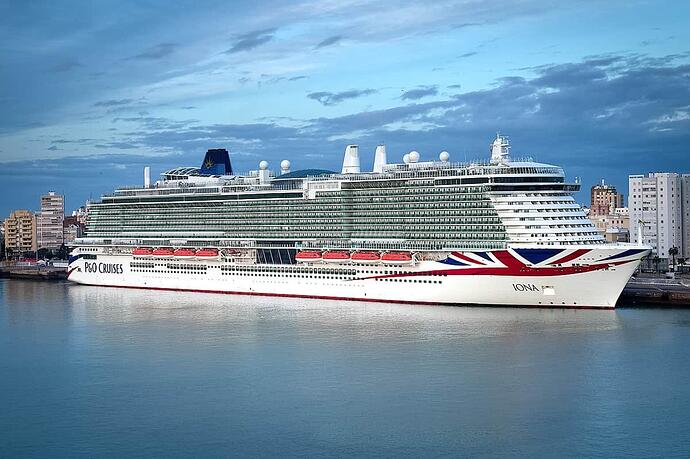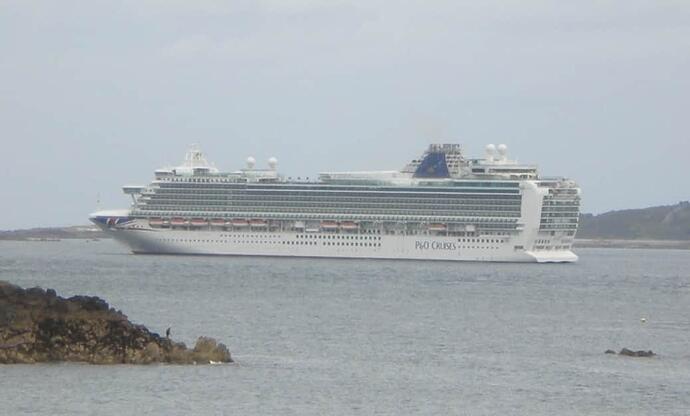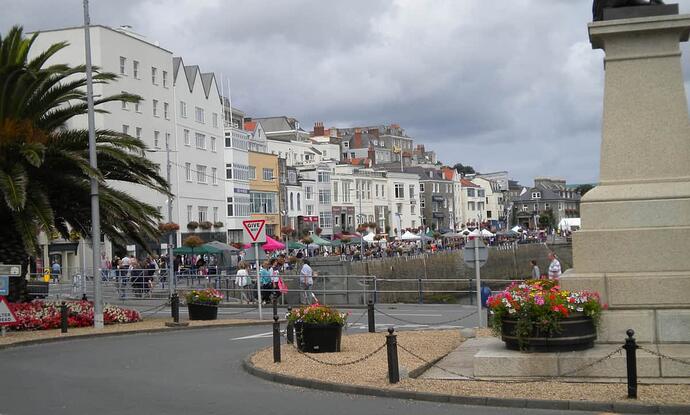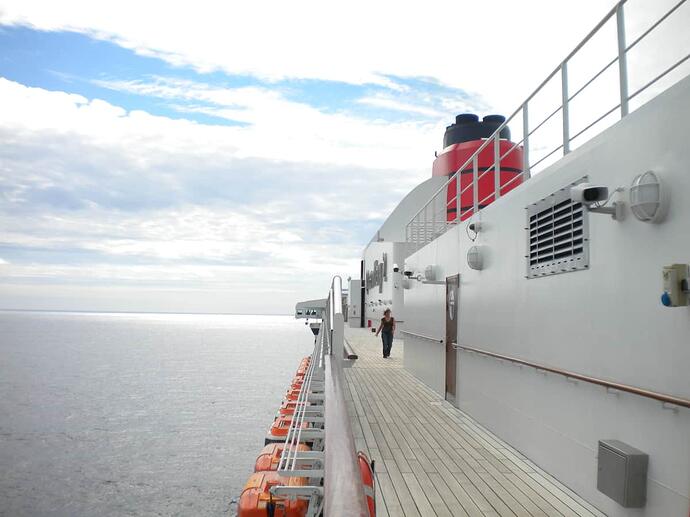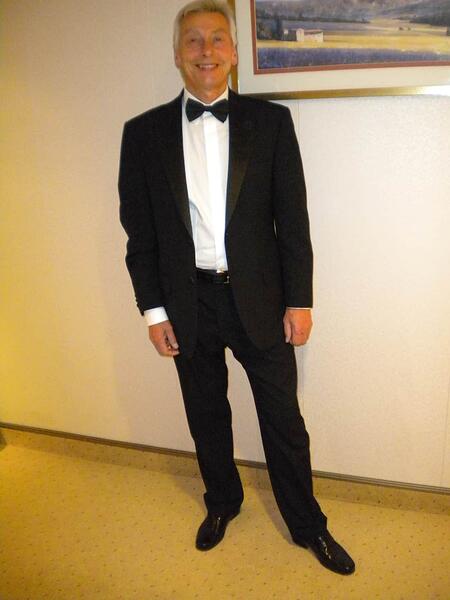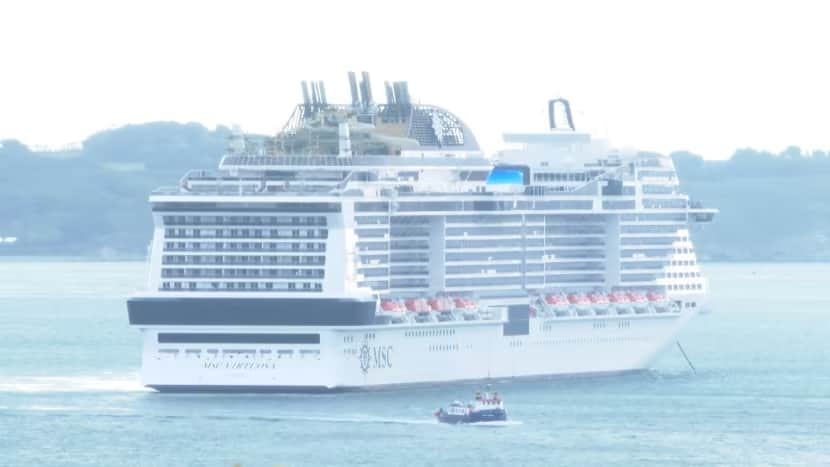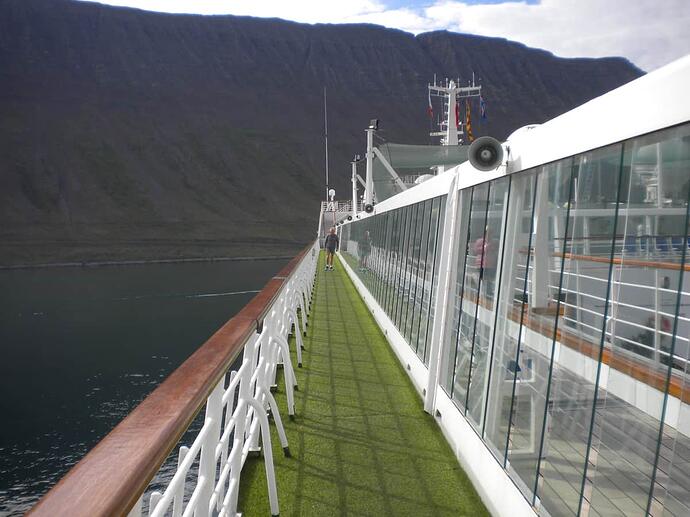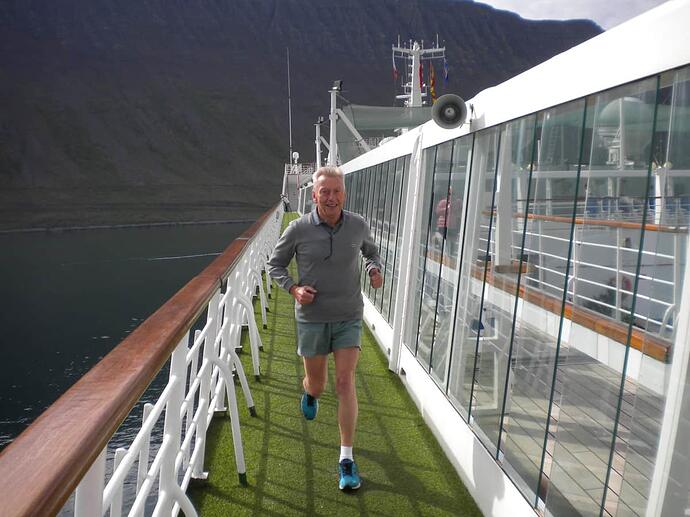Yes Chelsea, and all that too…
I didn’t say my vacations (holidays) were limited to cruising…
Cruising began in 2010 when Mrs Fox and myself retired.
Before that, holidays were usually taken at a seaside location, or places where one of my many marathons or fell runs took place.
I wanted to do something special for Mrs Fox in 2010 on her 60th birthday, so I booked a six day trans atlantic cruise to New York aboard the Cunard ship Queen Mary 2… We loved it, so from 2010 - 2019 we did several cruises, about one per year, but still visited the places we loved like Guernsey, The Lake District, and Wales among others. Variety is the spice of life Chelsea, and there are no limitations to the holidays we will choose in the future, health allowing…
I’m not criticizing those who enjoy doing this, it’s just not my thing at any age and of course we are too old now to go on interior canoe trips but that’s still my type of lifestyle and speed of it.
A lot of people want to go on vacations to be served and pampered. That’s the general idea of going in the first place and what you pay for.
Most people are more social than I am
We’re more alike than you think Chelsea…
![]()
The two new P&O (carnival ) ships, Iona and Arvia, are powered by Gas turbine engines and do not emit Sulphur Dioxide and soot particles…
Quote:-
Total propulsion power is rated at 37 megawatts (50,000 hp).[3] Together, the power system gives the vessel a service speed of 17 knots (31 km/h; 20 mph).[3] Iona will have a passenger capacity of 5,206 guests and 1,762 crew.[3] Powered by liquefied natural gas (LNG), Iona is designed to not emit sulphur dioxide emissions and soot particles.[[3]](MS Iona - Wikipedia)
There seems to be a similar ongoing issue in Venice.
I suppose if I were a true Venetian I wouldn’t want one of those monstrosities on my doorstep.
I’ve never seen the attraction of cruising myself, much prefer independence and sorting out my own itinerary.
Venice has indeed taken steps:
![]()
That’s a start in curtailing pollution but what about greywater, human sewage and the other 522 cruise ships?
We’re proud to list details about 524 cruise ships from 54 cruise lines.
This is Iona:
Iona has 17 different eateries, including eight restaurants designated as ‘select dining’, and 12 different bars. She also has 16 whirlpools and 4 swimming pools, one of which is housed under SkyDome, an entertainment venue topped by a 105-ton, 340-pane, 970-square-metre glass dome with a retractable stage for shows. The ship’s centre also includes a three-deck atrium flanked by triple-deck glass panels projecting outwards.
Iona has 18 total decks, a length of 344.5 metres (1,130 ft), and a beam of 42 metres (138 ft). Maximum power is rated at 61.7 megawatts (82,700 hp). Total propulsion power is rated at 37 megawatts (50,000 hp). Together, the power system gives the vessel a service speed of 17 knots (31 km/h; 20 mph). Iona will have a passenger capacity of 5,206 guests and 1,762 crew.
A monstrosity, indeed … ![]()
7,000 people are processing food and drink, performing daily ablutions and creating cleaning issues daily - that’ll be around 300,000 gallons of greywater and 60,000 gallons of human sewage generated per day … ![]()
I understood that modern cruise ships have sewerage treatment plants on board to filter and clean the waste before releasing into the seas. I can’t find any info on how clean…
Indeed they do:
Once while I was relaxing in my stateroom on a Royal Caribbean cruise ship, my daughter asked where her poop went after she flushed the toilet and it is actually a good question.
Cruise ships are often described as floating cities, and their waste management is no different than a small municipality.
With thousands of people onboard a ship, there is a need for a sophisticated approach to managing where everything goes once people are done with it, from human waste to recycling to leftover food.
Where your poop goes
Cruise ships have a water-treatment system onboard, similar to your hometown. With over 7,000 passengers and crew, Symphony of the Seas generates 210,000 gallons of black water and 1,000,000 of grey water during a one week cruise.
All the wastewater onboard is collected and absolutely nothing goes overboard unless it is first run through a treatment plant.
Water is divided into three categories:
Grey water: sinks, laundries, and drains
Black water: galleys and toilets
Bilge water: oils released from equipment in engine compartments that collect at the bottom of the vessel.Wastewater is run through the advanced wastewater-purification plant on the ship, which is above the US federal standard for purified water.
When black water enters the integrated treatment system, it first passes into a bioreactor ‘aeration chamber’ which is filled with bacteria that break down organic contaminants dissolved in the wastewater.
The sewage then enters a membrane filtration system to further filter impurities. In the ‘settlement chamber’, dense substances sink to the bottom and the water floats to the top. The residual sludgy material is repeatedly returned for reprocessing. At the end of the cycles the remaining material is disposed of in low-emission incinerators.
Finally, the clean sewage enters the ‘disinfection chamber’ where any remaining pathogens are sterilized by UV radiation. This leaves clean, safe and bacteria-free water, which is transferred to a storage tank until it can be discharged.
Believe it or not, this water is near tap-water quality. The water is either kept on board or discharged overboard when the cruise ship is at sea with a certain distance from land in order to meet the different local and international regulations. The ability to discharge water depends on where the ship is located, as some oceans and areas prohibit the practice.
Grey water can be discharged far out to sea after minimal treatment because it rarely includes harmful bacteria. Just like black water, it can only be discharged at sea in areas that are not designated environmentally sensitive regions.
That’s what the cruise line says.
I have no doubt that they try to maintain those standards but not all cruise lines/ships are the same - standards can fall and “accidents” can happen - with the volumes of “waste” being generated an accident has the potential to be disastrous.
If cruise ships can (legally) get away with pollution then they will.
I understand the issues that ports have with accepting cruise ships Omah, and the reasons go far beyond pollution and I wouldn’t want a resort flooded with thousands of cruise ship tourists while I was holidaying there. However, As a regular visitor to Guernsey, the capital, St Peter Port, go to extraordinary lengths to make the visitors welcome. Large markets are set up along the dockside, and speaking to the locals, cruise passengers make a big difference to the economy of the island regardless of the rumours.
I quite agree, and I would certainly not book a cruise on such a large ship.
However, some of my previous cruises have been on ships with 3000 passengers, and with 14 decks and numerous bars, restaurants and entertainment venues you never actually feel crowded…Except at breakfast, but even then you can breakfast in you allocated restaurant where your table is served and reserved.
Cunard are smaller conventional ships and second to none for service.
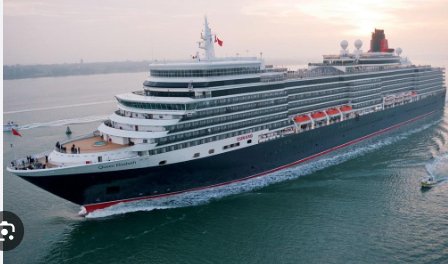
Crowded Ship?
Dressed for Dinner…
It seems that Guernsey may well be “the exception”:
Figures show cruise ships increase footfall in Guernsey ‘significantly’
A survey shows visitors from cruise ships increase footfall in St Peter Port “significantly,” according to the Guernsey Retail Group (GRG).
It collected data comparing the amount of pedestrians in the town on 25 April, when the MSC Virtuosa was visiting, with the previous Tuesday when there were no cruise ships docked.
The results found there was 34% more activity on the day the vessel was visiting.
but there is bad news, too:
Business owners voice concerns as 35 fewer cruise ships booked to visit Guernsey this year
Princess Cruises - one of the biggest operators in the area - announced its plans to pull out trips to the island from next year.
Owner of the Petit Train, Andrew Furniss, says this could cost his business somewhere between £10,000 and £12,000 a year.
He also says he’s quite pessimistic about the future of the cruise industry more generally: “As we look at the graphs of the number of passengers and income and how it’s all going, we can see a slow steady decline.”
Well look at you Foxy, you clean up well. 
Don’t say that.You’ll only encourage him.
did they let you keep running around the decks regularly??

 …………
…………
Good for you. I can’t see you wanting to go on a boat cruise if you couldn’t run. What’s it like running on the outskirts of a huge boat like this while it’s cruising?
I can’t see you wanting to go on a boat cruise if you couldn’t run. What’s it like running on the outskirts of a huge boat like this while it’s cruising?
Jul 23, 2023
The federal government has made new anti-pollution measures mandatory for cruise ships, but environmental groups say they don’t stop contamination of some of Canada’s most sensitive coastlines.
Transport Minister Omar Alghabra announced recently that voluntary guidelines established in April are now mandatory. Those rules cover the discharge and treatment for so-called black water, or stuff from toilets, and grey water, kitchen water, water from laundry machines, and water containing cleaning products, food waste, cooking oils/grease and other pollutants.
But they don’t address the largest source of acidic water from cruise ships and other vessels, which continues to flow into the ocean unabated, said Anna Barford, shipping campaigner for Stand.earth Canada.
About 90 per cent of the discharge from cruise ships, she said, is discharge from engine-exhaust scrubbers that use water to trap pollutants such as sulphur dioxide, carcinogens and heavy metals and flush them into the ocean rather than the air.
“They’ve taken an air pollution problem and turned it into a water pollution problem,” she said.
The new rules also do not provide independent onboard observers to ensure cruise ships follow the new sewage and grey water rules, Barford said. “We know from the experience of our (U.S.) neighbours it’s necessary to enforce, and catch the rule breakers.”
The new regulations prohibit cruise ships from dumping grey or black water within three nautical miles of shore. And the rules also call for better treatment for grey water discharge if ships are dumping less than 12 nautical miles from shore.
If found to be breaking the rules, they face a potential maximum penalty of $250,000, said Transport Canada.
The new regulations are in line with rules already in place in Canada’s Arctic and other waters along the West Coast like Alaska, California and Washington state, Transport Canada added.
But the ministry was silent about the fact it’s OK for cruise vessels to dump scrubber wastewater along the length of B.C.’s inland coast and the Arctic Ocean, a particularly sensitive marine ecosystem facing dramatic increases in shipping as the sea ice melts with climate change, Barford said.
The ministry did not clarify if or when it plans to deal with water from scrubbers. Numerous jurisdictions, including California and European countries like Germany and France, have already banned such dumping, she said.
Polluted scrubber water could be avoided if ships were required to use cleaner-burning fuels. But International Maritime Organization rules and Canadian rules allow ships to use dirtier heavy fuel oil if they use scrubbers.
I wonder why Canada is so tardy in addressing these Cruise ship pollution issues … ![]()

